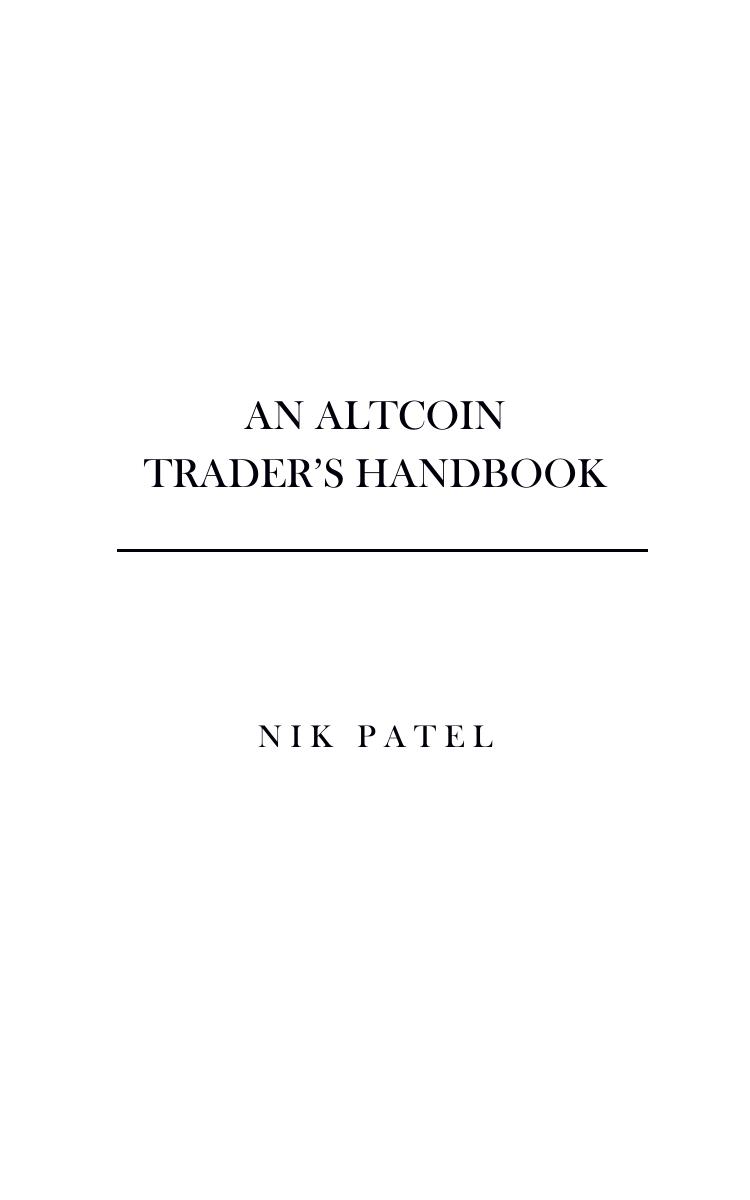An Altcoin Trader's Handbook by Nik Patel

Author:Nik Patel
Language: eng
Format: mobi, pdf
Published: 2018-06-04T16:00:00+00:00
Block Explorers and Rich-Lists
The one aspect of my approach to fundamental analysis that I am most often asked about is on the subject of the block explorer, and how I use the information provided to better understand the growth potential of a coin. In my experience, there is no other asset class that is illuminated with such transparency as cryptocurrencies, and the block explorer is one of the tools unique to the cryptosphere that is most insightful for a speculator. It is the most important tool outside of a chart for monitoring and analysing the workings of smart-money, and that is the key to understanding a market and profiting from it. Of course, the other aspects of fundamental analysis that deal with the structural underpinnings of a project are incredibly important in building an overall picture, but we are traders who are looking to exploit the market, and thus our focus should always be on figuring out price; understanding the market-maker is understanding the market.
The feature of the block explorer that we are most concerned with is the rich-list. This is simply a list of the singular addresses with the largest holdings in a coin, and is rendered by the transparency of the blockchain. Depending on the service used to host the block explorer, or its unique layout, the rich-list may appear in different forms. In the majority of cases, it appears simply as ‘Rich List’, as per any block explorer hosted on Chainz, such as the Blackcoin (BLK) explorer – https://chainz.cryptoid.info/blk/#!rich. It can also appear as a ‘Top 100’ tab on other explorers, such as the Condensate (RAIN) explorer – http://condensate.io/richlist. Note that on the Chainz explorers, it is the ‘Rich List’ that you want, rather than the ‘Largest Wallets’ tab. The latter is much more confusing to navigate and less useful for our purposes. The rich-list is what we want, as it displays singular addresses and the activity of each, making it easier to analyse.
Specifically, what the rich-list allows us to figure out is the pattern and extent of accumulation or distribution of the coin. What I mean by that is that, by tracking the activity of these top addresses, one can assess whether the coin is being stockpiled at current prices, thus making a stronger case for our own accumulation, or whether the coin is being sold by the large holders, thus providing us with potential reasoning for exiting at least part of our position.
Before I get into the specifics of my approach, I think it’s important to note the relationship between accumulation and distribution on the block explorer, and on the chart. What I have noticed is that rich-list analysis is most effective when used in conjunction with the chart, as accumulation is most readily and easily observed when a coin is at cyclical lows and distribution when it is at the highs. Whilst this may seem a somewhat obvious point, rich-list analysis can throw you off if this is not kept in mind.
For example, I
Download
This site does not store any files on its server. We only index and link to content provided by other sites. Please contact the content providers to delete copyright contents if any and email us, we'll remove relevant links or contents immediately.
Bad Blood by John Carreyrou(6543)
Rich Dad Poor Dad by Robert T. Kiyosaki(6399)
Principles: Life and Work by Ray Dalio(6204)
Playing to Win_ How Strategy Really Works by A.G. Lafley & Roger L. Martin(5913)
Management Strategies for the Cloud Revolution: How Cloud Computing Is Transforming Business and Why You Can't Afford to Be Left Behind by Charles Babcock(4524)
The Confidence Code by Katty Kay(4187)
Thinking in Bets by Annie Duke(4152)
American Kingpin by Nick Bilton(3753)
Delivering Happiness by Tony Hsieh(3364)
Project Animal Farm: An Accidental Journey into the Secret World of Farming and the Truth About Our Food by Sonia Faruqi(3176)
The Power of Habit by Charles Duhigg(3059)
The Tyranny of Metrics by Jerry Z. Muller(3000)
Brotopia by Emily Chang(3000)
Mastering Bitcoin: Programming the Open Blockchain by Andreas M. Antonopoulos(2980)
The Marketing Plan Handbook: Develop Big-Picture Marketing Plans for Pennies on the Dollar by Robert W. Bly(2975)
I Live in the Future & Here's How It Works by Nick Bilton(2934)
The Content Trap by Bharat Anand(2860)
Building a StoryBrand by Donald Miller(2839)
Applied Empathy by Michael Ventura(2838)
